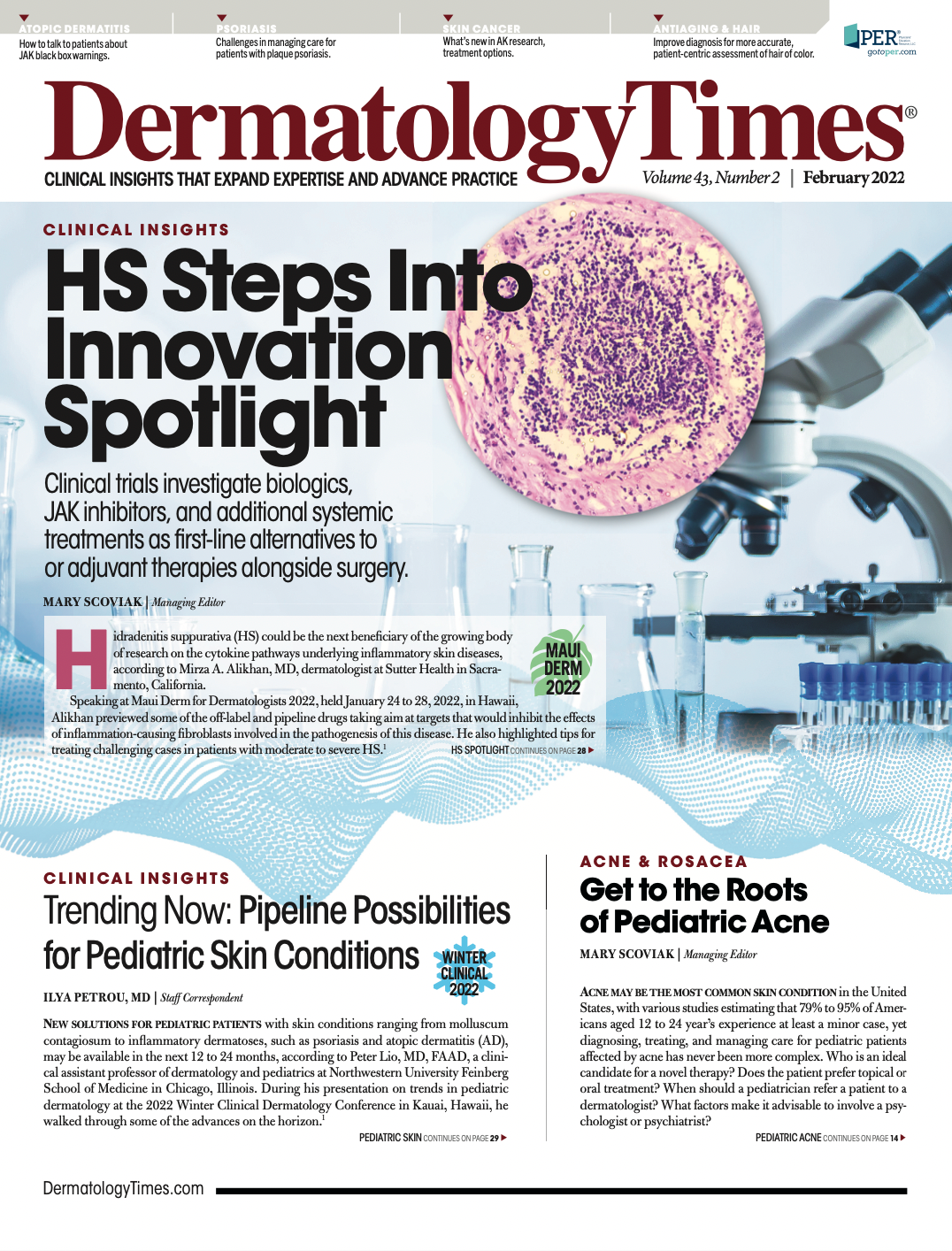- Case-Based Roundtable
- General Dermatology
- Eczema
- Chronic Hand Eczema
- Alopecia
- Aesthetics
- Vitiligo
- COVID-19
- Actinic Keratosis
- Precision Medicine and Biologics
- Rare Disease
- Wound Care
- Rosacea
- Psoriasis
- Psoriatic Arthritis
- Atopic Dermatitis
- Melasma
- NP and PA
- Skin Cancer
- Hidradenitis Suppurativa
- Drug Watch
- Pigmentary Disorders
- Acne
- Pediatric Dermatology
- Practice Management
- Prurigo Nodularis
- Buy-and-Bill
Publication
Article
Dermatology Times
Cosmetic Conundrums & Cleansing Complexities
Author(s):
In this month's Cosmetic Conundrum, Zoe Diana Draelos, MD, dives into common cleanser questions, a topic she also discussed at the Science of Skincare Summit, New York, New York, on November 6, 2021.
Q: What are the most common cleansing myths?
Zoe Diana Draelos, MD, is an adjunct assistant professor of dermatology at Duke University School of Medicine in Durham, North Carolina, and chief medical editor of Dermatology Times®

I will address the 3 most common cleansing myths I encounter from patients in my practice.
MYTH 1: ABUNDANT FOAM MEANS THE CLEANSER IS WORKING BETTER.
Many of the newer mild cleansers designed for patients with eczema and atopic dermatitis do not foam. Patients wrongly assume that the cleanser is not working, so they apply too much to the skin surface and experience worsening dryness. Foaming of a cleanser is related to the foaming agents added to the formulation, not the adequacy of cleansing. As a matter of fact, lipids and soils on the skin surface destroy the foam. So, the more dirt that is being removed, the less the cleanser foams. Abundant foam may be an indication that there is little dirt to remove from the skin surface.
MYTH 2: LIQUID CLEANSERS ARE MILDER THAN BAR CLEANSERS.
Liquid and bar cleansers may contain the same detergents but in different forms. You cannot always assume liquid cleansers are less irritating to the skin than bar cleansers.
MYTH 3: YOU CANNOT CLEANSE AND MOISTURIZE AT THE SAME TIME
The newer body washes actually allow cleansing and moisturizing with the same product application but at different times during the cleansing cycle. When the concentration of water is low and the concentration of cleanser is high during the application of the cleanser, cleaning occurs. During rinsing, when the concentration of cleanser is low and the concentration of water is high, moisturization can occur. It is during the rinse phase that dimethicone and other oils can be deposited on the skin surface. Thus, you cannot moisturize and cleanse at the same time, but you can cleanse and moisturize as part of the same application of depositing body washes.
Q:Why does skin feel tight after exiting the shower?
Many people equate this tight feeling with cleanliness, but it is actually a sensory signal that skin barrier damage has occurred. The cleanser can damage and denature skin proteins while removing the intercellular lipids, which decreases skin barrier function. This allows increased water evaporation from the skin, which initially is perceived as tightness and subsequently as dryness. This is why many people must apply a moisturizer following bathing—they want to alleviate the tight feeling. The tightness resolves when the moisturizer reduces transepidermal water loss, creating an environment for barrier repair.
Q: Why is the pH of cleanser so important?
The pH of cleanser is important in determining how much damage occurs to the stratum corneum during cleansing. High-alkaline pH cleansers cause swelling of the stratum corneum, allowing penetration of the cleanser into the skin. This causes stinging and burning as the cleanser damages the skin proteins. Lower-pH-balanced cleansers are formulated around pH 5.0 to 5.4, which reduces stratum corneum swelling and prevents skin barrier damage.
Q: Why do cleansers irritate the skin?
Cleansers of all types cause skin irritation to a greater or lesser degree. As mentioned previously, higher pH cleansers tend to bind more to the stratum corneum, causing protein denaturation and allowing increased water binding to the stratum corneum. This binding causes stratum corneum swelling, leading to more water penetration and skin hyperhydration. This cycle continues until the cleanser is rinsed from the skin. Therefore, it is very important that patients rinse all cleansers completely and thoroughly from the skin before leaving the bath or shower.
Q: Can you use bar soap to clean your hair?
No, you should not use bar soap to clean your hair. You should use shampoo. Why? Bar soap does not contain a sequestering agent. A sequestering agent binds the minerals found in hard water so that soap scum does not form. Soap scum is the thick white/gray creamy material that may be seen around the edge of the bathtub, also known as a bathtub ring, in areas of the country that have hard water. This soap scum will form on hair, especially individuals with long hair, leaving it dull, greasy, and unattractive. It will also form on the scalp creating irritation, itching, and a condition that can resemble seborrheic dermatitis. Men are more likely than women to wash their hair with bar soap so this irritant contact dermatitis is more commonly observed in men.
Dermatologists should advise all patients to use shampoo to clean their hair and not bar soap, even though it might be more convenient to use one cleanser for all purposes.






